Tobacco Use in Brockton, Massachusetts
- Tobacco use causes various health complications.
- In the U.S., 400,000 people die annually from tobacco associated ailments.
- More African-American men than White men are affected (Jones et al., 2010).
- Healthy people 2020 intends to minimize these deaths by minimizing tobacco use.
- Therefore, it is necessary to establish population-based approaches to minimize the use of tobacco among African-Americans.

Statistics of Tobacco Use in Brockton
- 18 % of total population comprises smokers.
- 22.6% of smokers are males while 15.4% are females (Smoking report for the Greater Brockton CHNA, n.d.).
- White Non-Hispanics – 16%.
- Black Non-Hispanics account for 31%.
- 28% are high school graduates while 12.5% have college certificates.
- Most tobacco-related deaths are caused by complications in the respiratory system.
- Middle-level earners (25,000 to 49,999 dollars annually) – largest group of smokers.
- Low-level earners (below 25,000 dollars annually) – the second largest group.
- High income earners (above 50,000 dollars) – the smallest fraction of smokers (11%).
- 25 to 44 years (19%); 45 to 64 years (18.2%).
- Pregnant White Non-Hispanic women form the largest group with 161 smokers followed by Black Non-Hispanic with 33 and Hispanic with 15 smokers.
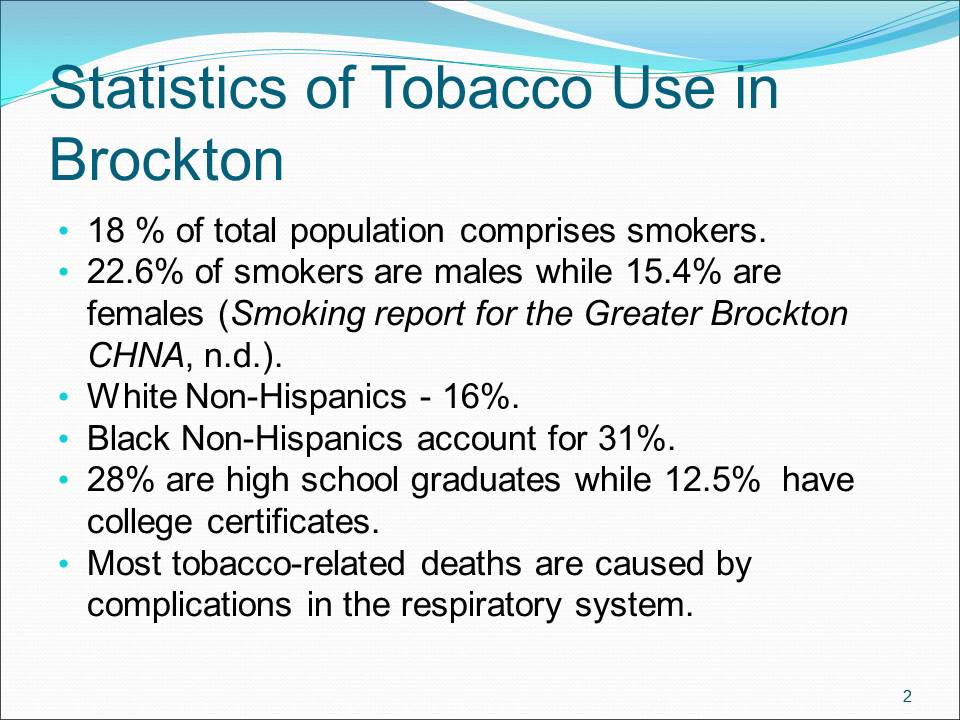
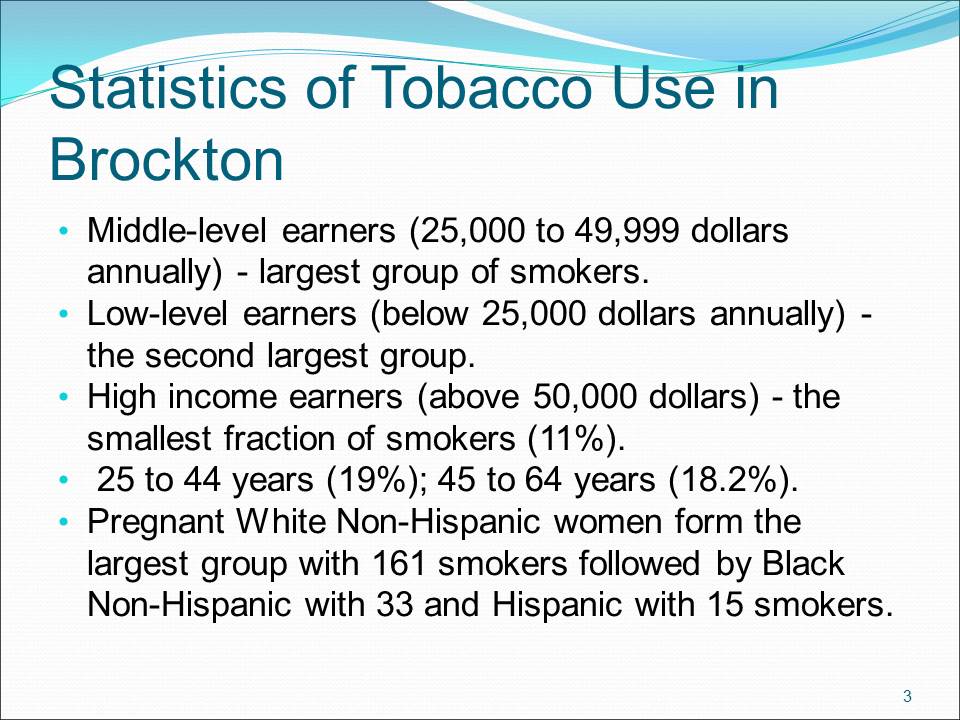
Health Effects of Tobacco Use
- Tobacco has over 4,000 chemicals e.g. nicotine, hydrogen cyanide, carbon monoxide, toluidine etc.
- Tobacco causes various cancers e.g. lung, larynx and oral cancers (Lewis, 2008, p. 193).
- Heart ailments, stroke, male and female reproductive illnesses, and complications of the lungs also arise.
- Expectant mothers give birth to babies with low birth weight or may have miscarriages.
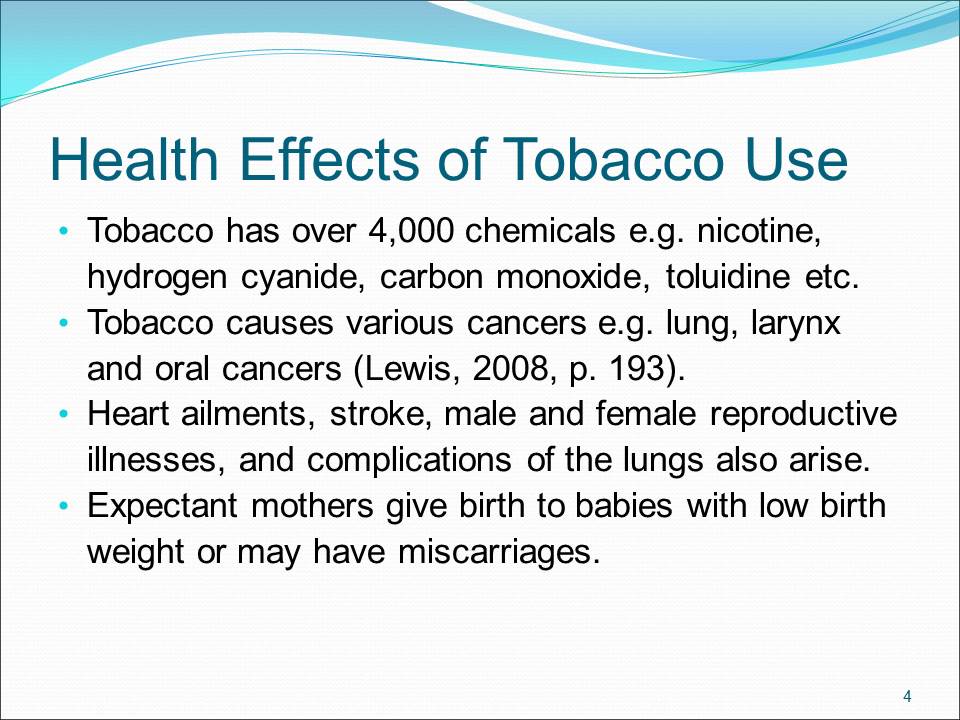
Secondhand Smoke (SHS) and Smokeless Tobacco
- SHS comes from the remnants of burning tobacco or smoke exhaled by a smoker.
- SHS has more toxic components than inhaled smoke because it burns at high temperatures.
- SHS causes more harm because of small fragments that stay in the air for long periods.
- Smokeless tobacco includes hookah (shisha), and chewing tobacco.
- Using smokeless tobacco is as harmful as smoking.
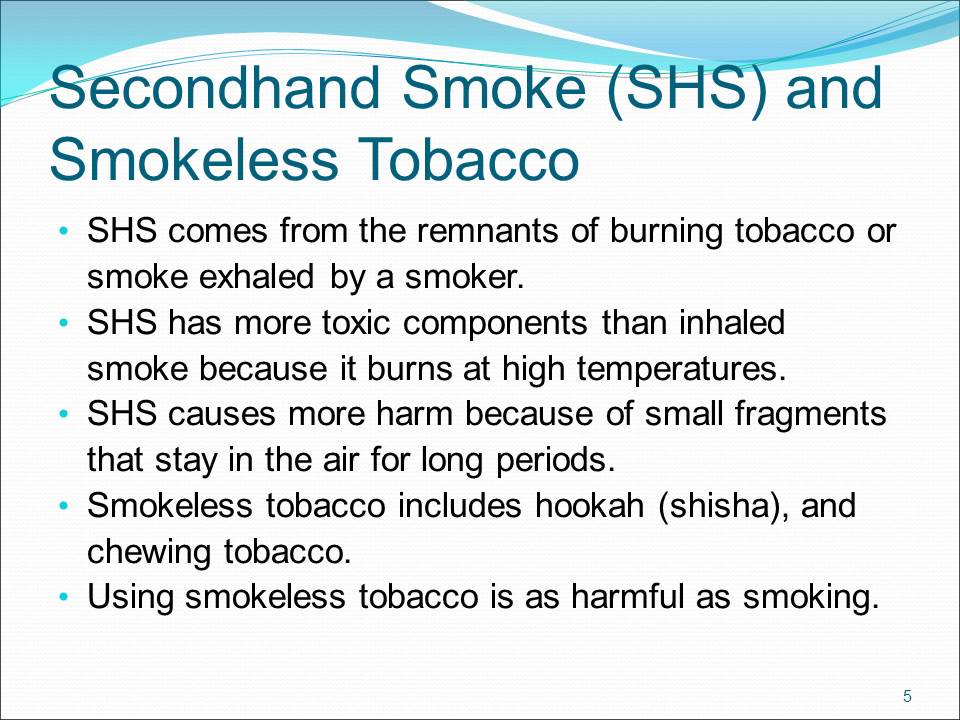
Effects of SHS
- SHS destroys blood vessels hence diminished coronary blood flow.
- Aggravates the symptoms of asthma by narrowing the air passages.
- Raises cancer of the lung risk by about 30 %.
- SHS causes sudden infant death syndrome in children whose parents are smokers.
- Leads to infections of the middle ear in children.
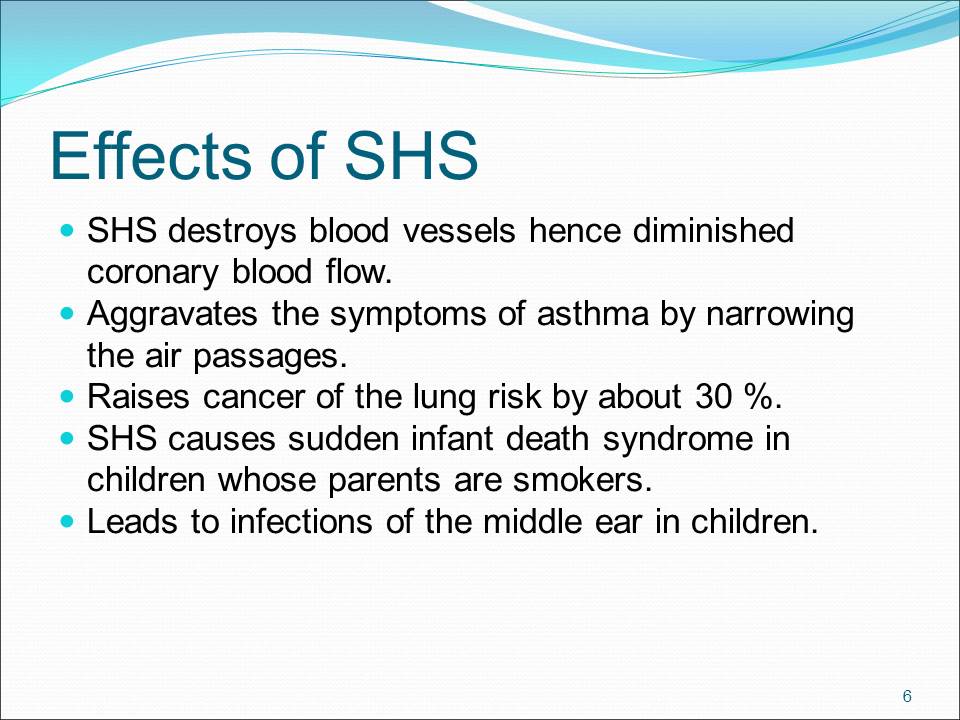
Current Interventions on Tobacco Use
- The government provides funds to help with smoking cessation.
- Services offered include behavioral assistance, counseling, online sources and self-help resources (Sadler, 2012).
- Information is conveyed through telephone conversations, in person or using focus group discussions.
- Medications that help in quitting of smoking include bupropion, varenicline, and NRT (Sadler, 2012).
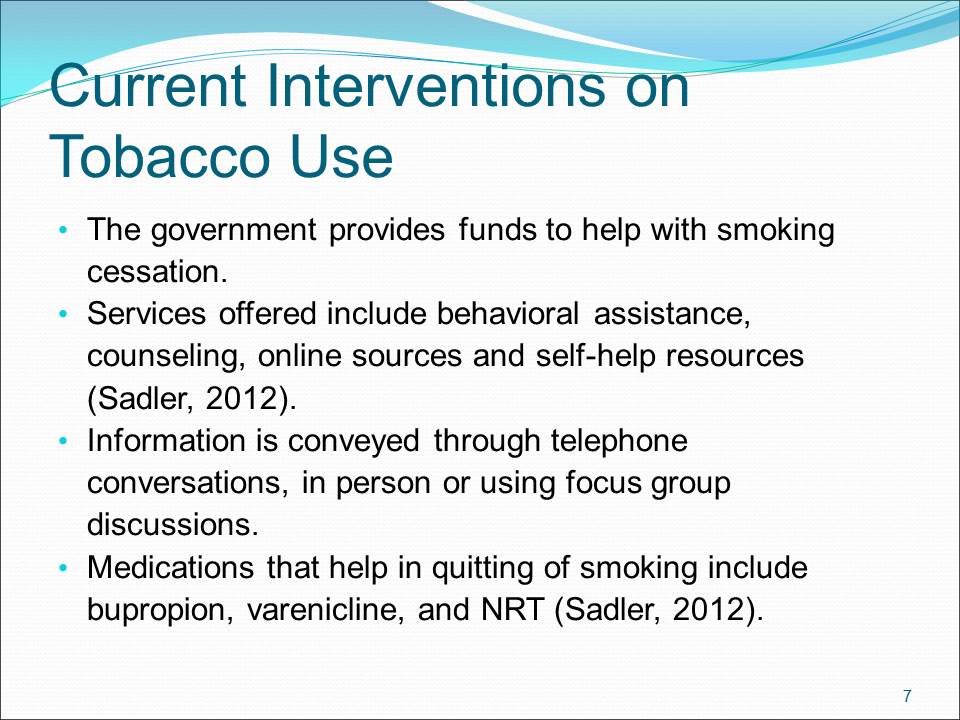
Community Interventions
- Implementation of smoking bans.
- Enlightening the masses on the dangers of tobacco use and the availability of treatment programs.
- Impeding the minors’ right to use tobacco.
- Minimizing contact with secondhand smoke.
- Establishing telephone support lines designed for smoking termination.
- Undergoing brief counseling sessions at the local pharmacies.
- Smokers ought to attend counseling sessions as groups as it yields high rates of success.
- Creating public awareness on the availability of smoking cessation services.
- Minimizing contact with secondhand smoke.
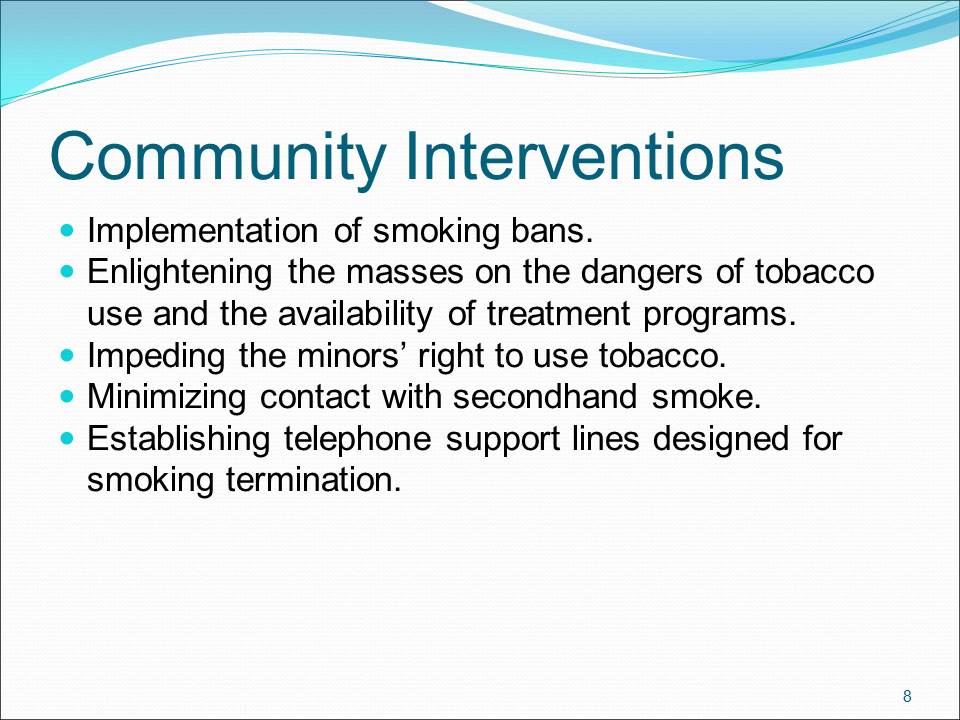
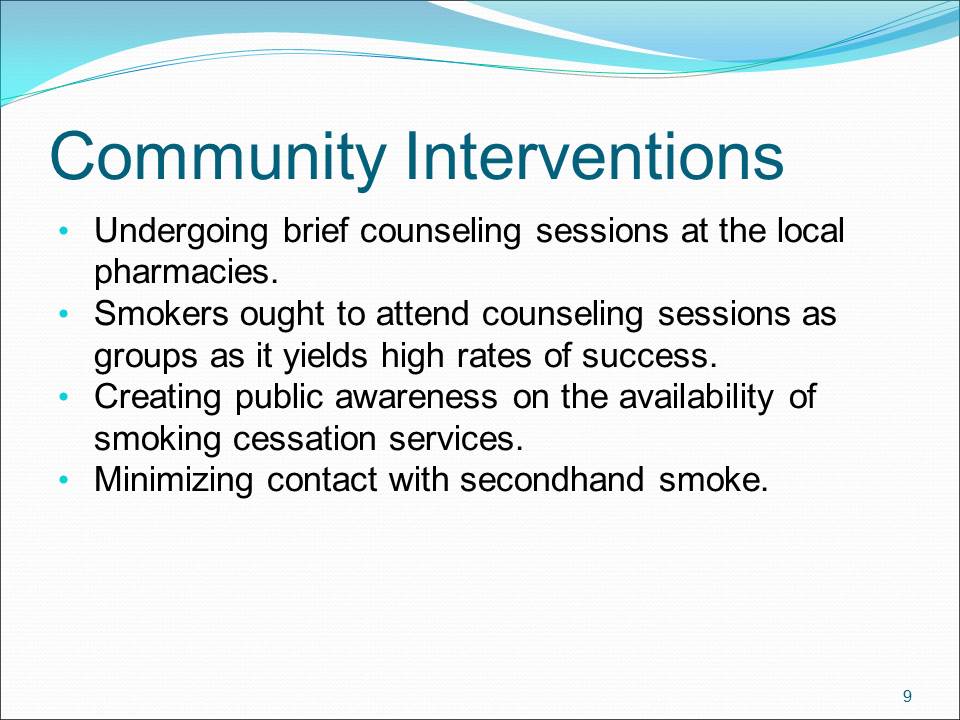
Smoking Cessation Agencies in Brockton
- Public health nurses and social workers counsel smokers and refer them to community-based organizations such as QuitWorks and MassHealth Tobacco Cessation Benefit.
- The MassHealth Tobacco Cessation Benefit provides resources that facilitate smoking cessation.
- QuitWorks has helped about 600 smokers between 2004 and 2009.
- The program (QuitWorks) has helplines for assistance in smoking cessation.

Nursing Interventions
- Primary interventions are procedures that prevent disease occurrence e.g. nurses educate the masses on the dangers of tobacco use.
- Secondary interventions include frequent screening for smoking-related illnesses and counseling smokers during hospitalization.
- Tertiary interventions entail the management of the negative effects of tobacco use such as cardiovascular disease and lung ailments.

Conclusion
- Nurses ought to work in partnership with community-based organizations towards tobacco control endeavors.
- In Brockton, women need to learn the dangers of smoking to prevent harming their children.
- This will help realize the objective of healthy people 2020 of reducing deaths related to tobacco use.
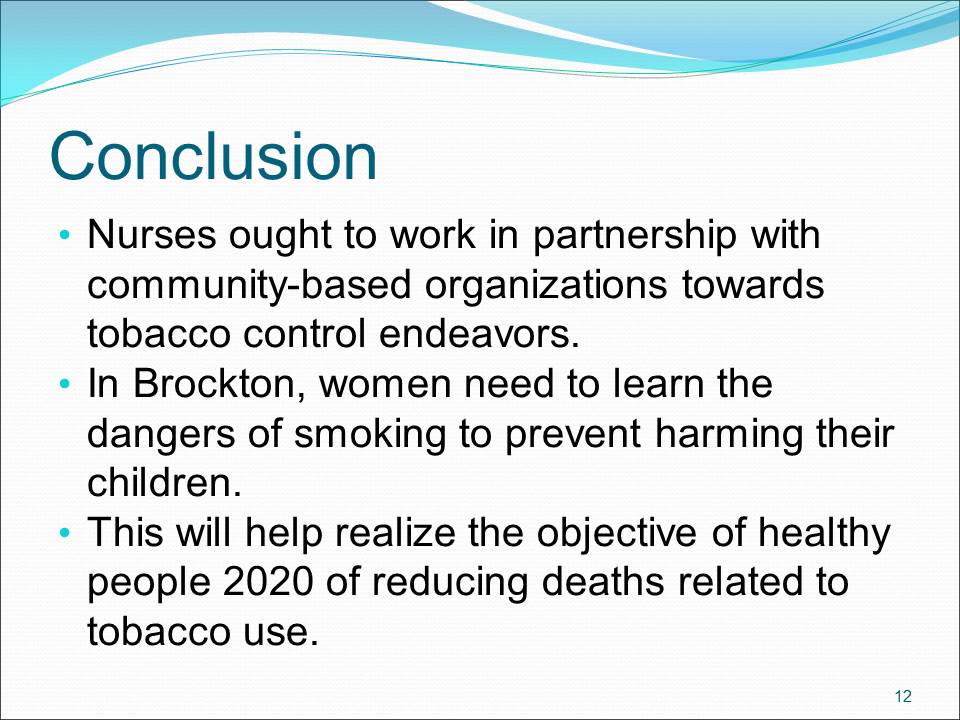
References
Jones, P. R., Waters, C. M., Oka, R. K., & McGhee, E. M. (2010). Increasing community capacity to reduce tobacco related disparities in African American communities. Public Health Nursing, 27(6), 552-560.
Lewis, P. C. (2008). Tobacco: What is it and why do people continue to use it? Medsurg Nursing, 17(3), 193-201.
Sadler, E. (2012). Smoking, related diseases and the Government’s tobacco control strategy. Journal of Community Nursing, 26(4), 26-28.
Smoking report for the Greater Brockton CHNA. (n.d.). Web.